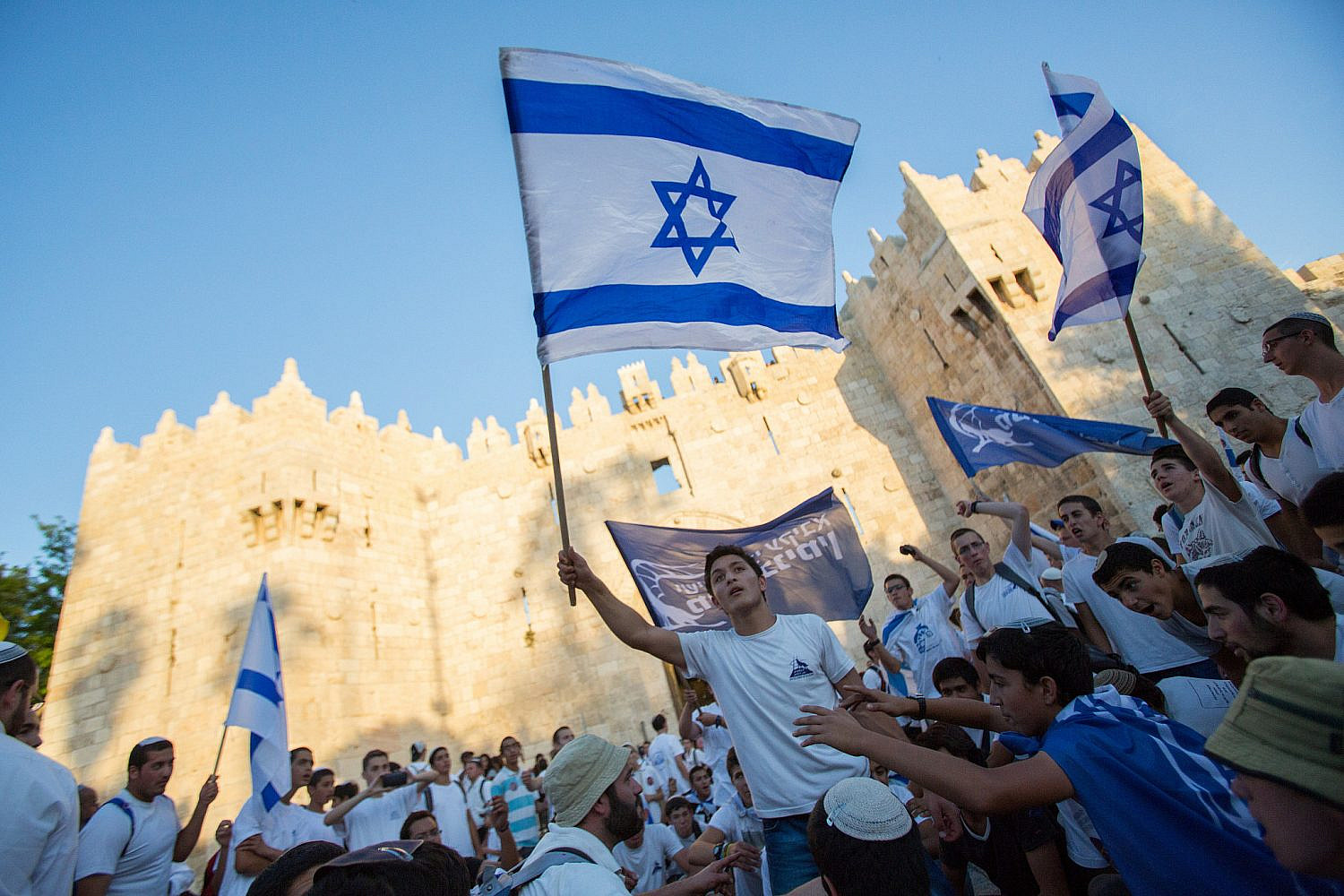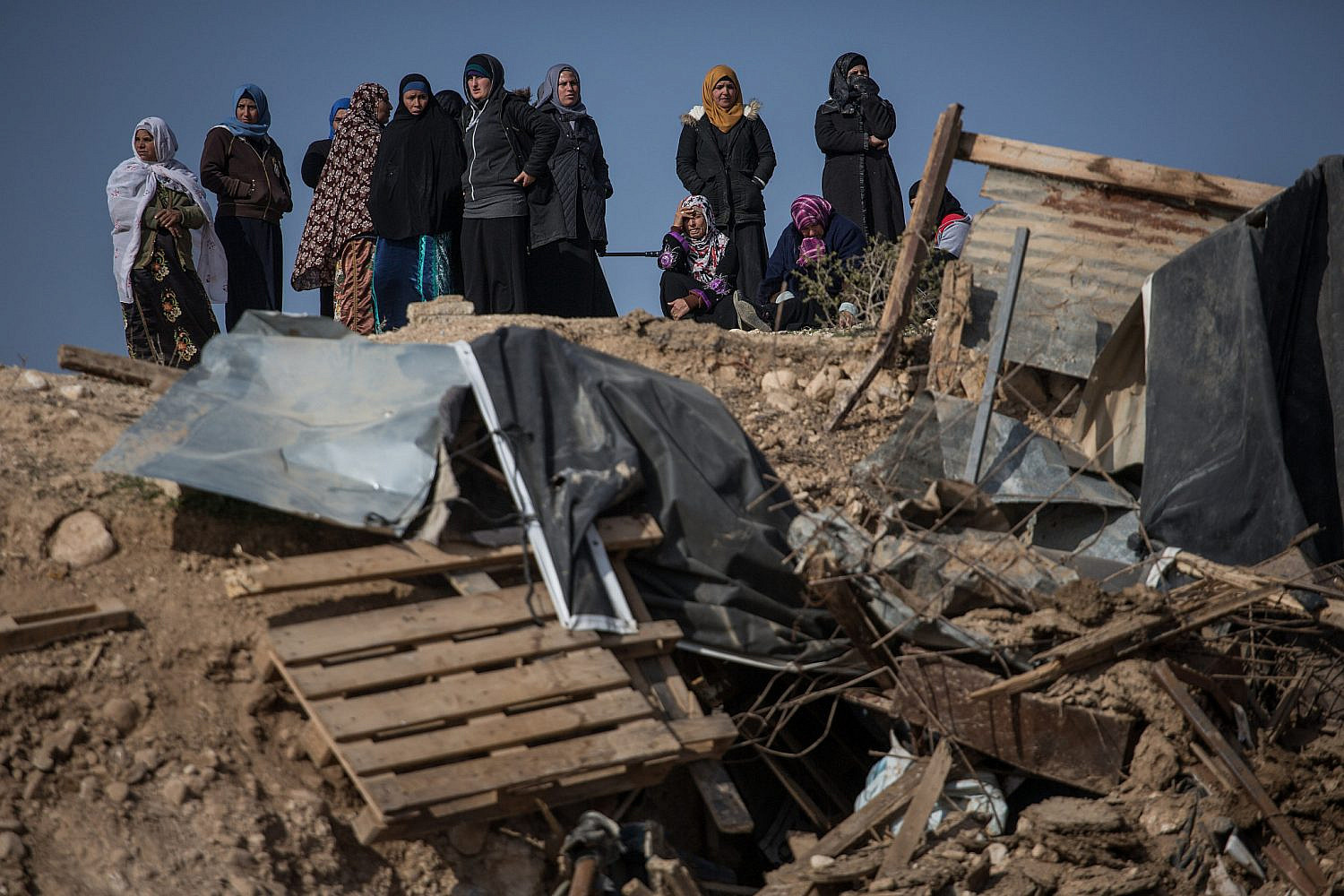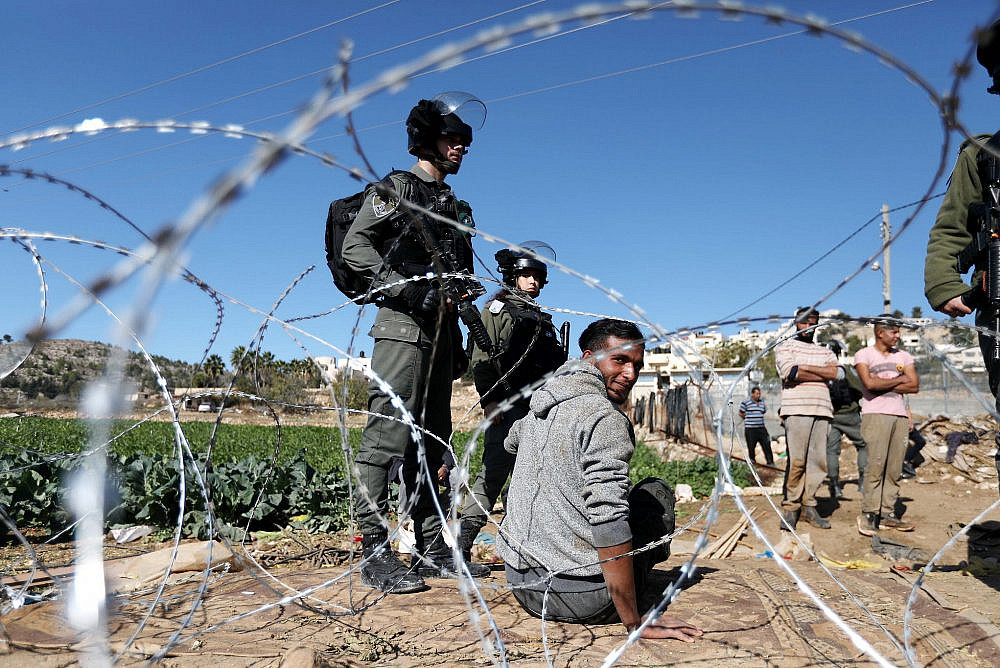There is a constantly lurking danger for individuals and groups struggling for social or political change. We tend to concentrate so intently on our goal that we no longer realize that the circumstances in which we are acting have fundamentally changed. Not only are we on a different playing field, we’re playing a different game entirely. When the forces we face use their enormous power to distort and disguise this reality, our mission of recognizing it — of calling it by its name — becomes ever more necessary.
This is precisely what B’Tselem, one of Israel’s oldest human rights organizations, is doing today: the NGO is declaring its position that, between the river and the sea, there exists a single, Israeli, apartheid regime that strives to entrench, deepen, and make irreversible Jewish supremacy in every corner of the land.
The word “apartheid” has very severe connotations, and the historical memory it conjures is bone-chilling. As a member of B’Tselem’s board, I can say that we held many difficult discussions leading up to the decision to publish this statement. Establishing that the State of Israel maintains an apartheid regime on both sides of the Green Line was not easy for any of us — not only as members of a human rights group, but first and foremost as Israeli citizens.
It is important to remember, however, that “apartheid” is not simply a derogatory term that leftists throw around whenever they get angry at the current reality. Rather, it is a description of a regime with clear characteristics: one whose organizing principle is to promote and perpetuate the superiority of one group over another. As we enter 2021, this is precisely the reality we face in Israel-Palestine.
Since the occupation of 1967, the existence of the so-called Green Line — which ostensibly distinguishes between sovereign, democratic Israel and the “occupied territories” — has largely become the delineator of left-right political discourse in Israel. At the same time, for most of its existence, Israel has done everything in its power to erase the Green Line, not only by establishing settlements — all of which are illegal under international law — but by promoting virtually identical policies on both sides of that line, with the ultimate goal of maintaining absolute and exclusive Jewish supremacy.

The mechanisms and tactics for doing so are similar. One is the demographic engineering of the territory by dividing it into subdivisions, applying different personal statuses for Palestinians living in each area, and enacting discriminatory policies of land theft. Another is a set of policies regarding immigration and freedom of movement, which blatantly favor Jewish demographics. Yet another is the restriction of political participation on the basis of national affiliation, in order to preserve Jewish supremacy. And many, many more.
Not just about separate benches
When it was established in 1989, B’Tselem’s mandate was limited to the West Bank, East Jerusalem, and the Gaza Strip. In accordance with the widely-accepted paradigm that views “Israel” as one entity and the “occupied territories” as another, the organization did not deal with the human rights situation inside the accepted borders of the State of Israel, and eschewed an overarching view of the entire area between the Jordan River and the Mediterranean Sea.
B’Tselem’s mandate is not changing; but after 32 years, it is no longer possible to view what is happening in the occupied territories as being isolated from what is happening in the entire territory under Israeli control. The concepts we commonly use to describe the reality, such as “endless occupation” or “one-state reality,” are no longer appropriate. Among other things, naming the current reality will help the organization carry out its work more effectively and accurately.
Anyone who wants to understand Israeli policy in the occupied territories in isolation from the Jewish Nation-State Law, for example, is lying to herself. Anyone who tries to understand the mass destruction of Palestinian communities in the West Bank — along with the intensive construction of Jewish settlements — in isolation from the destruction of Umm al-Hiran in the Naqab/Negev — and its replacement with the Jewish town of Hiran — is lying to himself.
Anyone who wants to understand the ease with which Israeli armed forces shoot to death Palestinians in the West Bank without any consequences, cannot ignore the Israeli police’s killing of 13 Palestinian civilians in October 2000, for which no one was convicted. It is impossible to understand the threats of demolition against Khan al-Ahmar in the West Bank without seeing how those very same threats have been made good on the village of al-Araqib in the Naqab.

It is true that Israeli apartheid lacks some of the more “visual” elements of the kind practiced in South Africa. But apartheid is not simply about separate benches for people of different skin color; rather, it is the division of human beings living under the same regime into rigid hierarchies, and the distribution of public resources and the granting — or denial — of rights according those hierarchies. Israel may not have Jews-only benches, but it does have Jews-only roads in places like Hebron.
This organizing logic has created a reality in which Israeli Jews enjoy a contiguous space and freedom of movement on both sides of the Green Line — with the exception of the open-air prison created for the Palestinians in Gaza. The same logic traps Palestinians inside the sub-categories of Areas A, B, and C in the West Bank; East Jerusalem; Gaza; and so-called “Israel proper.” Each of these designations comes with a set of unique restrictions imposed by Israel. Thus, unlike an Israeli Jew, a Palestinian resident of the West Bank cannot cross the Green Line without a special permit, and even their freedom of movement inside the West Bank is constrained.
Paradigm shift
The fact that Israel’s apartheid regime controls the entire area between the river and the sea does not mean that the occupation no longer exists. On the contrary, it is very tangible to its Palestinian victims, and constitutes a separate legal category within Israel’s overall regime. Not only does the occupation not deviate from this regime, it is one of its clearest manifestations.
B’Tselem’s position does not seek to erase the existing differences between the realities of life in the West Bank, Gaza, East Jerusalem and Palestinian cities inside Israel. Rather, it seeks to place them in the broader context that Israel constantly tries to hide: in all these places, Israel is the de facto sovereign, and in each one, in various forms, it imposes a regime of Jewish supremacy.
B’Tselem has come to this conclusion with a heavy heart and the utmost seriousness. After 32 years, it is not easy to make a paradigm shift. We live and work within Israeli society, we are an integral part of it, and we are well aware of the recoiling and revulsion that this word evokes in the public discourse. But ignoring the reality that Israel has deliberately created for decades would go against the very mandate that the organization took upon itself more than three decades ago.
Change of any kind begins with a proper reading of the reality that one seeks to alter; to look at that reality with open eyes, and to call it by its name. The reality that prevails today between the river and the sea has a name: apartheid. Denying it will not make it go away. On the contrary, it will only help deepen it. Recognizing this reality is a necessary step toward correcting it.
With that, B’Tselem invites the Israeli public and the international community to look at our reality with courage, to internalize its full meaning, and to work to create a different future based on full and equal human rights for all the inhabitants of the country.
A version of this article was also published in Hebrew on Local Call. Read it here.


